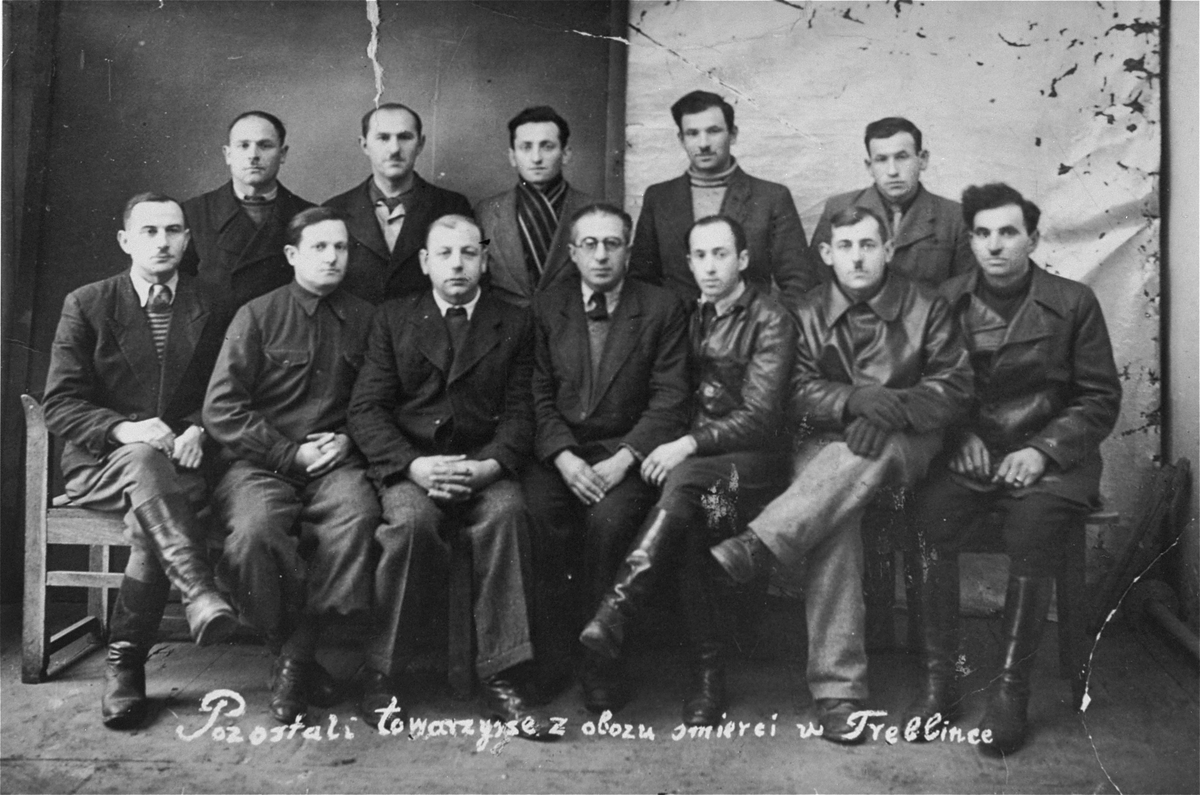Source

Source: United States Holocaust Memorial Museum, courtesy of Roberta Zuckerman.
On August 2, 1943, a group of Jewish inmates, known as the Organizing Committee, at Treblinka death camp in Nazi-occupied Poland began a revolt against their SS and Ukrainian camp guards. Emboldened by the uprising in the Warsaw Ghetto and the losses of the German army at Stalingrad and fearful of the camp’s full liquidation, these resistors raided the SS armory at the camp and mounted a fierce fight against their captors. 300 inmates were eventually able to break through the camp’s barbed wire fences and escaped. The SS began a manhunt for the escaped prisoners. Of the 300 escapees, only 100 would survive the war after finding refuge in Polish homes or evading capture by other means. The image, here, is that of a handful of the surviving participants in the Treblinka revolt. This uprising and others, for example, at Sobibor and the Warsaw ghetto, as well as the myriad stories of individuals who survived underground or fought as partisans from forest hideouts dispel any claims that Europe’s Jews accepted their fate passively.

Source: United States Holocaust Memorial Museum, courtesy of Roberta Zuckerman.